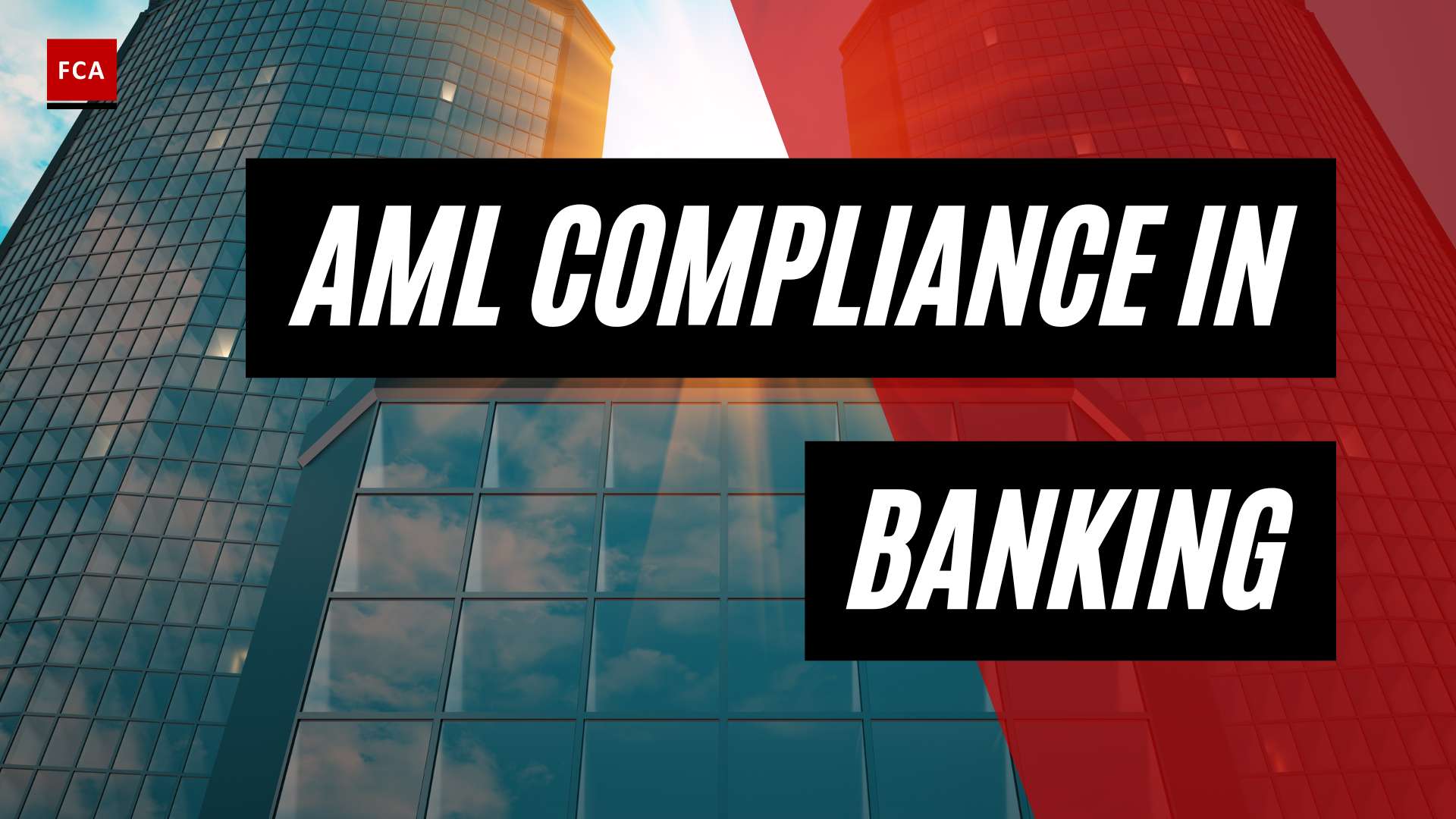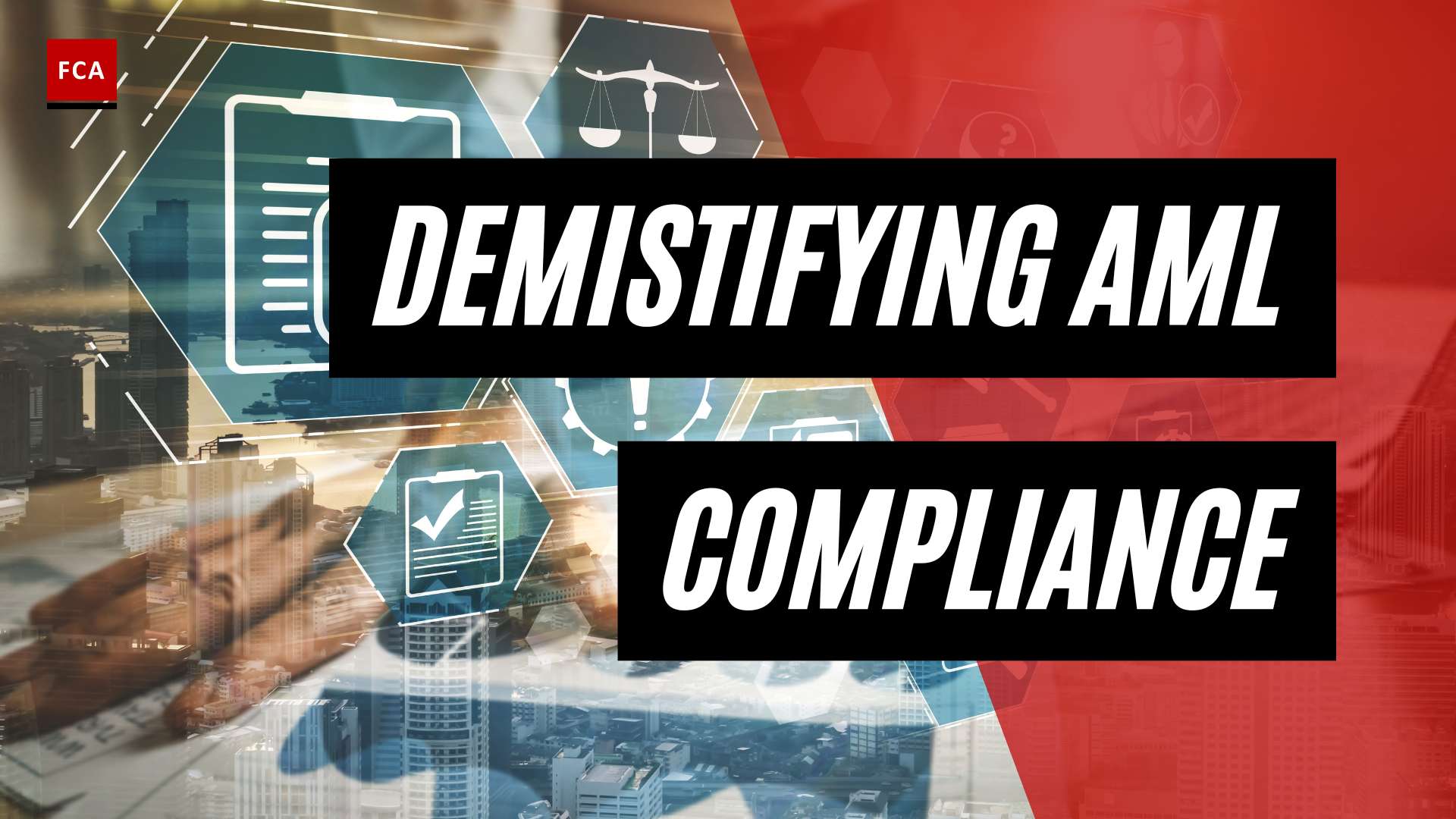Importance of AML Training for Senior Management
Senior management plays a crucial role in ensuring effective Anti-Money Laundering (AML) compliance within an organization. Understanding the importance of AML training for senior management is key to maintaining a robust AML program and mitigating financial crime risks. In this section, we will explore two vital aspects of AML training for senior management: setting the tone for compliance and understanding the legal framework and responsibilities.
Setting the Tone for Compliance
AML training for senior management is critical for establishing a culture of compliance throughout the organization. As leaders, senior management sets the example for employees and plays a pivotal role in fostering a commitment to AML compliance (AML UAE). By actively participating in AML training programs, senior management demonstrates their dedication to upholding ethical standards and complying with regulatory requirements.
When senior management prioritizes AML training, employees are more likely to recognize the significance of AML compliance and follow suit. This creates a culture where compliance is valued and embedded into the organization’s operations, reducing the risk of financial crime (Financial Crime Academy). By setting the tone for compliance, senior management demonstrates their commitment to integrity and helps build a strong foundation for effective AML measures.
Legal Framework and Responsibilities
Senior management holds a significant level of responsibility in ensuring AML compliance within their organization. Understanding the legal framework and their specific responsibilities is crucial to effectively lead AML efforts.
Regulatory authorities expect senior management to be knowledgeable about AML compliance matters and to provide oversight to ensure the implementation of robust compliance programs (AML UAE). They are responsible for ensuring that appropriate policies, procedures, and controls are in place to mitigate money laundering and terrorist financing risks.
AML training for senior management provides the necessary knowledge and understanding of the legal framework, including relevant laws, regulations, and reporting obligations. It equips them with the tools to effectively oversee AML compliance efforts and make informed decisions to protect the institution from financial crime risks.
By receiving comprehensive AML training, senior management can effectively fulfill their obligations, provide guidance to the organization, and promote a culture of compliance throughout the institution. This commitment to AML training helps safeguard the institution’s reputation and integrity, and ensures compliance with regulatory expectations.
In the next section, we will explore the key components of AML training for senior management, which further enhance their understanding of money laundering risks and the recognition of red flags.
Key Components of AML Training for Senior Management
To ensure effective anti-money laundering (AML) compliance within an organization, it is essential for senior management to receive comprehensive AML training. This training equips them with the knowledge and skills necessary to effectively oversee the AML program and mitigate the risks associated with money laundering. Two key components of AML training for senior management are understanding money laundering risks and recognizing red flags.
Understanding Money Laundering Risks
AML training for senior management should provide a deep understanding of the various money laundering risks that organizations may face. This includes knowledge of the methods and techniques used by criminals to conceal illicit funds and the potential vulnerabilities within the organization that can be exploited. By understanding these risks, senior management can implement appropriate controls and procedures to detect and prevent money laundering activities.
Training should cover topics such as customer due diligence, sanctions screening, transaction monitoring, suspicious activity reporting, and maintaining appropriate record-keeping practices. It is crucial for senior management to grasp the legal and regulatory requirements related to AML, as well as the potential reputational and financial risks associated with non-compliance.
Recognizing Red Flags
Another crucial component of AML training for senior management is the ability to recognize red flags that may indicate potential money laundering activities. These red flags can vary depending on the industry, but some common indicators include:
- Unusually large cash transactions or frequent transactions just below reporting thresholds.
- Rapid movement of funds through complex transactions or multiple accounts.
- Transactions involving high-risk jurisdictions or politically exposed persons.
- Inconsistent or incomplete customer information.
- Unexplained changes in customer behavior or business patterns.
By understanding these red flags, senior management can actively participate in the detection and reporting of suspicious activities. They can ensure that appropriate systems and procedures are in place to identify and investigate potentially suspicious transactions.
By providing senior management with a comprehensive understanding of money laundering risks and training them to recognize red flags, organizations can foster a culture of compliance and ensure that AML policies and procedures are effectively implemented throughout the organization. This commitment from senior management sets the tone for the entire organization, reinforcing the importance of AML compliance and mitigating the risks associated with money laundering.
For more information on AML training for senior management, refer to our article on senior management AML training requirements.
Topics Covered in AML Training for Senior Management
To ensure that senior management is well-equipped to fulfill their role in combating money laundering and financial crime, AML training programs for senior management cover a range of important topics. These topics provide senior management with the necessary knowledge and skills to effectively oversee AML compliance within their organization. Two key topics covered in AML training for senior management are customer due diligence and transaction monitoring and reporting.
Customer Due Diligence
Customer due diligence (CDD) is an essential component of AML training for senior management. It involves the process of verifying the identity of customers, assessing their potential risks, and understanding the nature and purpose of their business relationships. CDD measures are designed to prevent money laundering and terrorist financing by ensuring that organizations have a clear understanding of their customers and the transactions they undertake.
During AML training, senior management will learn about the importance of implementing robust CDD procedures. This includes conducting identity verification, assessing the risk profile of customers, and establishing ongoing monitoring processes. By understanding the principles of CDD, senior management can make informed decisions and ensure that their organization is compliant with AML regulations.
Transaction Monitoring and Reporting
Another crucial topic covered in AML training for senior management is transaction monitoring and reporting. This involves the identification and analysis of potentially suspicious transactions that may indicate money laundering or other illicit activities. Senior management plays a critical role in ensuring that effective transaction monitoring systems are in place within their organization.
During AML training, senior management will learn about the indicators and red flags of suspicious activity, as well as the reporting obligations under AML regulations. They will understand the importance of implementing robust transaction monitoring systems, maintaining accurate records, and promptly reporting any suspicious transactions to the relevant authorities. By being knowledgeable in transaction monitoring and reporting, senior management can contribute to the prevention and detection of financial crimes.
By covering topics such as customer due diligence, transaction monitoring, and reporting obligations, AML training for senior management equips them with the necessary knowledge and skills to effectively combat money laundering and financial crime. This training ensures that senior management is aware of their responsibilities, can oversee AML compliance programs, and make informed decisions to protect their organization from the risks associated with financial crime.
For more information on AML training for senior management, you can refer to our article on senior management AML training requirements.
Benefits of Effective AML Training for Senior Management
When it comes to anti-money laundering (AML) compliance, providing effective training to senior management is essential. AML training for senior management offers numerous benefits, including preventing financial crime and protecting the reputation of the organization, ultimately building trust with stakeholders.
Preventing Financial Crime
Effective AML training equips senior management with the knowledge and skills necessary to identify and mitigate the risks of financial crime. By understanding the latest money laundering techniques and typologies, senior management can implement robust controls and procedures to prevent illicit activities within the organization.
The training emphasizes the importance of due diligence in customer onboarding and transaction monitoring. It enables senior management to recognize suspicious activities and red flags, empowering them to take appropriate actions to prevent money laundering and terrorist financing. By staying informed about emerging risks and regulatory changes, senior management can adapt their strategies and stay ahead of evolving threats.
Protecting Reputation and Building Trust
AML training for senior management goes beyond legal compliance; it safeguards the reputation and integrity of the organization. Senior management plays a crucial role in setting the tone for a culture of compliance within the organization. When senior management demonstrates a commitment to AML compliance and actively participates in training, it sends a strong message to employees and stakeholders about the importance of ethical conduct.
By upholding high standards of AML compliance, organizations can build trust with customers, investors, and regulatory authorities. Effective AML training enables senior management to lead by example and instill a sense of confidence in the institution’s ability to prevent financial crime. This, in turn, can enhance the organization’s reputation and credibility in the market.
To further explore the benefits of AML training for senior management, refer to our articles on aml training for board of directors and senior management aml compliance training.
By investing in comprehensive AML training programs for senior management, organizations can create a culture of compliance, prevent financial crime, and protect their reputation. The knowledge and commitment of senior management are vital in ensuring the effective implementation of AML compliance programs and aligning with regulatory requirements. Stay up to date with the latest AML training standards and requirements to ensure your organization remains at the forefront of AML compliance.
Consequences of Inadequate AML Training
Inadequate AML training for senior management can have serious consequences for both individuals and organizations. Understanding the potential criminal and civil penalties, as well as the AML fines and sanctions, is essential in emphasizing the importance of comprehensive AML training programs.
Criminal and Civil Penalties
Money laundering is a pervasive form of financial crime worldwide, and individuals, companies, and institutions involved in such activities can face criminal liability. The severity and intentionality of the activities play a significant role in determining the consequences. In some cases, individuals may face imprisonment, while companies and institutions may be subject to fines and other penalties (Unit21).
The penalties for money laundering offenses can vary depending on the jurisdiction. In the United States, violations of the Bank Secrecy Act can lead to fines of up to $500,000, imprisonment for up to ten years, or both. The USA PATRIOT Act introduced measures to target financial crime associated with money laundering and terrorism financing, with penalties of up to $1 million or double the value of the transaction (Unit21). In the European Union, the 6th Anti-Money Laundering Directive (6AMLD) increased criminal liability for money laundering offenses and introduced new predicate offenses, resulting in penalties of up to 5 million euros.
AML Fines and Sanctions
Financial organizations that fail to comply with AML regulations can face both civil and criminal penalties. These penalties can include substantial fines and sanctions that have significant financial implications. The fines imposed can vary depending on the severity and frequency of the AML violations. In some cases, fines can reach millions or even billions of dollars.
For example, several financial institutions have faced substantial fines for AML failings. Capital One was fined $390 million, Deutsche Bank $130 million, BitMEX $100 million, HSBC UK £64 million, NatWest £265 million, N26 $5 million, USAA Federal Savings Bank $140 million, and MidFirst Bank received a Finding of Violation. These fines were imposed for various AML failures, such as inadequate transaction monitoring, failure to file suspicious activity reports, violations of AML regulations, and maintaining accounts for individuals on sanctions lists (Unit21).
Apart from fines, organizations and individuals can also face sanctions that restrict their ability to conduct business with financial institutions. These sanctions can have significant consequences for reputation and business relationships, leading to potential loss of clients and trust in the market.
Understanding the potential consequences of inadequate AML training emphasizes the importance of implementing effective AML training programs for senior management. By prioritizing comprehensive education and ensuring compliance with AML regulations, organizations can mitigate the risk of facing criminal and civil penalties, as well as AML fines and sanctions.
Strategies for Effective AML Training for Senior Management
To ensure the effectiveness of AML training for senior management, it is essential to implement strategies that cater to their specific needs and responsibilities. Two key strategies that contribute to successful AML training for senior management are continuous education and updates, as well as customized training programs.
Continuous Education and Updates
Regular training sessions for senior management are necessary to keep them updated on the latest trends in financial crime and money laundering techniques. Continuous education ensures that senior executives remain vigilant and proactive in detecting and preventing money laundering activities within the organization (Financial Crime Academy). Some key considerations for continuous education and updates in AML training for senior management include:
-
Emerging Threats: Regular updates on emerging threats, such as new money laundering methodologies or evolving regulatory requirements, help senior management stay informed and adapt their strategies accordingly. This ensures that they are equipped to address the changing landscape of financial crime.
-
Regulatory Changes: AML regulations are subject to frequent updates and revisions. It is crucial for senior management to stay up to date with these changes to ensure compliance and effective oversight of AML programs. Training sessions should cover the latest regulatory developments and provide guidance on implementing necessary changes.
-
Best Practices: Ongoing AML training should incorporate best practices for risk assessment, suspicious activity reporting, and compliance program management. Sharing industry insights and success stories can help senior management stay informed about effective strategies used by other organizations to combat money laundering.
By providing continuous education and updates, organizations can ensure that senior management remains knowledgeable and proactive in their efforts to combat money laundering.
Customized Training Programs
AML training for senior management should be tailored to the specific roles and responsibilities of executives within the organization. Customized training programs can address the unique AML challenges faced by different departments and ensure that senior management understands how AML regulations apply to their areas of oversight. Some important considerations for customized AML training programs for senior management include:
-
Role-Specific Training: Different departments within an organization may have distinct AML compliance requirements. Customized training programs can focus on the specific responsibilities of senior management in areas such as risk management, compliance oversight, or customer due diligence. This targeted approach ensures that training is relevant and practical for each executive.
-
Real-Life Scenarios: Incorporating real-life scenarios and case studies into the training can provide senior management with practical insights and examples of how AML principles are applied in day-to-day operations. This helps them understand the potential risks, challenges, and decision-making processes involved in combating money laundering.
-
Interactive Workshops: Interactive workshops and group discussions can engage senior management in active learning and promote knowledge sharing. These sessions can encourage executives to collaborate, exchange ideas, and collectively develop strategies to enhance AML compliance within the organization.
By customizing AML training programs for senior management, organizations can ensure that executives receive targeted and relevant knowledge to fulfill their roles effectively in combating money laundering.
By implementing strategies such as continuous education and updates, as well as customized training programs, organizations can equip senior management with the knowledge and skills necessary to oversee effective AML compliance programs. These strategies contribute to a culture of compliance and empower senior executives to lead by example in the fight against financial crime.
Regulatory Requirements for AML Training
To effectively combat money laundering and ensure compliance with regulations, financial institutions must adhere to regulatory requirements for AML training. In particular, senior management plays a critical role in setting the tone for compliance and overseeing AML efforts within an organization. This section explores two key aspects of regulatory requirements for AML training: FINRA compliance and international AML training standards.
FINRA Compliance and Resources
The Financial Industry Regulatory Authority (FINRA) provides resources and guidelines for AML training within the financial services industry. FINRA’s website offers resources for industry professionals, including registered representatives, to fulfill their continuing education requirements and perform compliance-related tasks (FINRA AML FAQ). By staying up to date with FINRA’s compliance requirements and utilizing the available resources, financial institutions can ensure their AML training programs for senior management align with industry standards.
International AML Training Standards
In addition to specific regulatory requirements set forth by organizations like FINRA, international AML training standards play a crucial role in guiding the development and implementation of effective AML training programs for senior management. These standards ensure a comprehensive approach to AML training that covers the necessary knowledge and skills required to recognize and mitigate money laundering risks.
Implementing AML training programs that adhere to international standards helps financial institutions meet compliance obligations and effectively manage financial crime risks. Such training equips senior management with the necessary tools and knowledge to identify and respond to red flags, ultimately safeguarding the institution’s reputation and minimizing the risk of regulatory violations (PRMIA).
By aligning with both regulatory requirements and international AML training standards, financial institutions can ensure that their AML training programs for senior management are robust, comprehensive, and effective. These training programs are essential in combating money laundering, protecting the institution’s reputation, and maintaining compliance with relevant laws and regulations.
It is crucial for financial institutions to take a proactive approach to AML training, continuously assessing and updating their programs to address emerging risks and regulatory changes. By staying informed about regulatory requirements, leveraging available resources, and incorporating international AML training standards, financial institutions can strengthen their AML training efforts and effectively combat financial crime.








